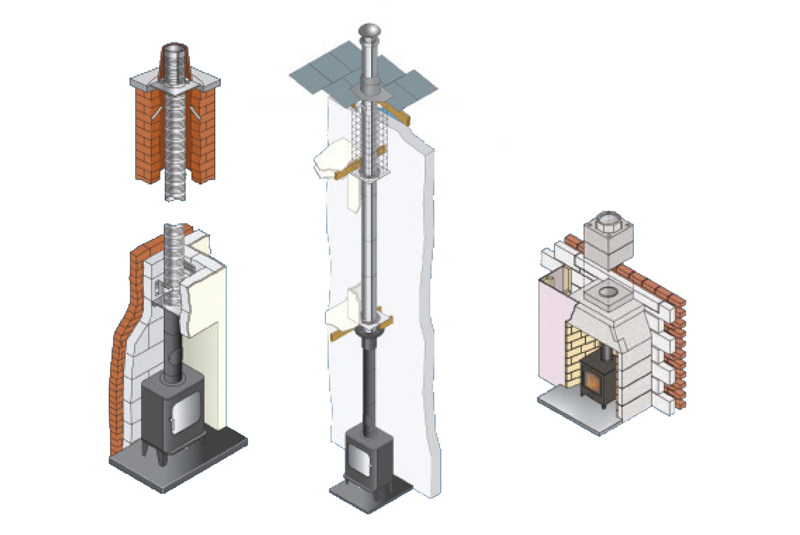
Dennis Milligan, President of BFCMA, discusses the importance of maintaining standards in the design, installation and testing of chimneys and flues.
The CE mark is now widely recognised as the mandatory approvals mark on flue and chimney products but it is only the tip of the proverbial iceberg. It is based on the achievement of exacting product standards that have been developed to give the user confidence that the product is fit for purpose. Installers should always look for the standard the product has been measured against when they are considering using it.
The British Flue and Chimney Manufacturers Association (BFCMA) has been at the forefront of developing standards since it was formed. The BFCMA represents the interests of the UK chimney and flue industry on European chimney standards committees.
Matching the flue
The function of a chimney or flue is to discharge the products of combustion into the atmosphere. This, however, is not as straightforward as it may sound. Most chimneys operate under negative pressure, relying on the laws of thermal dynamics to transport the flue’s gases up the length of the chimney or flue to the atmosphere. This requires an unimpeded flow path to the top of the flue that maintains the temperature of the gases above the dew point. Chimney and flue standards are there to specify the components that should be used and how they should be used.
Chimneys and flues are required to discharge a variety of combustion gases. Different types of flue will be required to safely handle the different gases. A key feature of the chimney and flue standards is a user-readable classification system that designates the features of the flue components. The features covered include temperature and pressure rating, fire, condensate and corrosion resistance and distance to combustibles. The classification system is known as the CE Designation. With stainless steel components a label showing the classification must go with each flue component, so that its specification can be easily verified.
Product testing
Product testing is the backbone of setting standards. Chimney and flue components are rigorously tested to prove that they can meet the required performance. In addition to this most chimney/flue companies use simulation software to confirm that a system chimney/flue will function as specified.
System flues
Product standards and CE marking apply to both flue components and to system chimneys. It is worth pointing out that a CE mark for a system chimney applies to the complete flue system, including added components like rain caps. The use of components that have not been tested with the flue invalidates the CE mark and turns the flue into a custom flue.
Design and Installation guides
In addition to establishing standards, the BFCMA has also produced a number of design and installation guides covering wood burning and multi fuel stoves, biomass appliances and commercial flues. Guides for gas appliances and for concentric chimneys are planned for next year to coincide with the publication of new standards.
The design and installation of chimneys and flues in the residential sector are largely covered by Approved Document J. However, it has been some time since Document J was updated and in the meantime BS 15287-1 Chimneys. Design, installation and commissioning of chimneys has been updated. The BFCMA guide General Guidance on the selection & Installation of chimneys and flues highlights the changes and explains the alterative installation methods now available.
Brexit
The CEN organisation which is responsible for setting European product standards is independent of the European Commission. BSi has confirmed its commitment to continue with European standards and the government has indicated that it plans to continue with the current standards system after Brexit. The BFCMA will continue to work on European product standards to ensure that the requirements of the UK chimney and flue industry are met.












